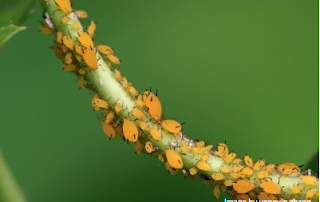Today we found our swan plants decimated by aphids. Decimated means destroyed.
There were so aphids that our swan plants were dying. Mrs Mardell decided that we should pull them out.
We had questions:
What were aphids?
How do we get rid of them?
and Why were there so many?
Aphids are pesky insects that like to eat soft shots on certain plants.
How do we get rid of them?
We need to remove the aphids so they stop sucking the sap of the swan plants. When they puncture the shoot with their mouth pieces they can make the plant sick by introducing other diseases, as well as drinking the sap needed for the leaf shots to grow.
We can use a spray to get rid of the aphids.
We can encourage ladybirds to come into our garden to eat the aphids.
for more information on how to stop the aphids eating our plants read here.
We like to remove our aphids by brushing them off gently with a paintbrush. That way our our caterpillars are not effected.
Think: what plants can we grow that also help to deter aphids?
Why are there so many?
Female aphids produce 5 offspring a day for 30 days! if all five of those babies are females this adds more aphids very quickly.
More about aphids







